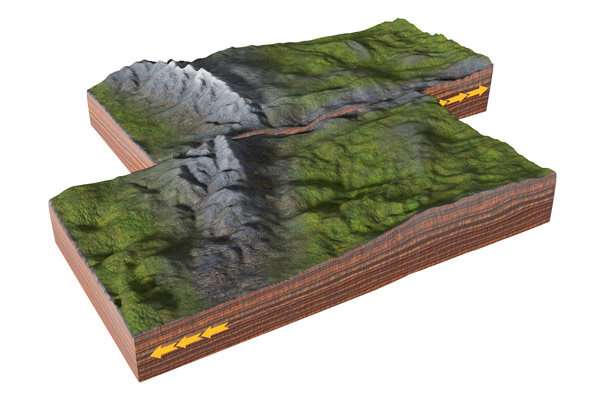This article has been reviewed according to Science X's editorial process and policies. Editors have highlighted the following attributes while ensuring the content's credibility:
fact-checked
peer-reviewed publication
trusted source
proofread
Neural networks could help predict destructive earthquakes

An artificial neural network has taken its first steps toward predicting the timing and size of future destructive earthquakes, according to RIKEN researchers. Their paper is published in the journal Nature Communications.
Earthquakes typically occur when parts of the Earth's crust suddenly move around a fracture, or fault, in the rock. This releases a huge amount of strain energy that shakes the surrounding region, sometimes unleashing enormous destruction, such as in the case of the February earthquake in Turkey and Syria.
Predicting an earthquake before it hits could give people enough time to evacuate threatened areas, potentially saving many thousands of lives. But earthquake prediction is notoriously difficult.
To create mathematical models of earthquakes, researchers often draw an analogy to defects within the structures of crystals—cracks within crystals resemble faults in the Earth's crust. When applied to the motion of crustal faults, these "dislocation models" describe the movement and deformation of the Earth's crust during earthquakes.
In contrast, a team led by Naonori Ueda of the RIKEN Center for Advanced Intelligence Project (AIP) considered applying a neural network that learns physical laws, called a physics-informed neural network (PINN). Conventional neural networks learn functional relationships between inputs and outputs, whereas PINNs differ in that they learn to satisfy a physical model described by partial differential equations.
However, the team found that a PINN, which learns continuous functions, would be difficult to directly apply to cases such as crustal deformation models, where the displacement is discontinuous across a fault line.
Ueda and his co-workers have overcome this difficulty by using a specially designed coordinate system to deal with the discontinuity across faults. This allowed them to accurately model the deformation of the Earth's crust, even in regions close to faults.
"The proposed modeling has the potential to realize a high-precision prediction," says Ueda.
The researchers trained their neural networks using physical laws rather than data, which is ideal for applications where data acquisition can be difficult.
To demonstrate the effectiveness of the approach, the researchers applied their physics-informed neural networks to model strike-slip faults, in which two blocks of the Earth's crust move horizontally about a vertical fracture. The network could turn information about a particular location inside the Earth into a prediction of the amount of crustal displacement at that point.
"This work demonstrated PINN's ability to accurately model crustal deformation on complex structures," says Tomohisa Okazaki, also of AIP.
PINNs represent a relatively new form of machine learning, and the researchers hope that their approach could be applied to many other problems involving crustal deformation.
More information: Tomohisa Okazaki et al, Physics-informed deep learning approach for modeling crustal deformation, Nature Communications (2022). DOI: 10.1038/s41467-022-34922-1
Journal information: Nature Communications
Provided by RIKEN




















